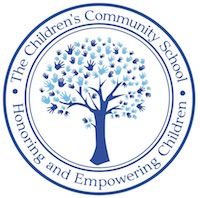Dear CCS Summer Club,
Hello! I’m Teacher Naima, former Redbud teacher and incoming assistant director at the Children’s Community School. Today’s Summer Club offering explores the different ways that mindfulness is a useful tool that all people, including your children, can actively use when they are feeling overwhelmed in their bodies, brains, or feelings. To underscore that truth, I spend some of the video I recorded for your child by reading the book Silence, by Lemniscates, which illustrates how the protagonist of the story uses silence as a mindfulness tool to be more aware of themself and the world around them during various activities and in different settings. Mindfulness is one of the Four Pillars of our school-wide curriculum, or as we define it in our handbook, “the ability to be present and attentive”. It is when we’re able to be mindful that we are able to best regulate ourselves and interact intentionally with what surrounds us. My hope is that the video and accompanying activities in this email will help your little one consider the ways that they already practice mindfulness, and identify times when practicing mindfulness would be helpful for them.
Learning / Content Area: I open the video by talking to your child(ren) about what it may feel like when your body, thoughts, and emotions feel too fast, too numerous, or too big. These feelings, which are especially common for children and also experienced by adults, are all related to self-regulation. When I refer to self-regulation, I’m talking about the ability to be self-aware of one’s own behavior, and altering behavior based on those observations. The reason why self-regulation can be more difficult for children than adults is because it relies heavily on the prefrontal cortex of our brains, which continues to develop until age 26! Mindfulness exercises our prefrontal cortexes and strengthens them; therefore, explicitly teaching self-regulation tools like mindfulness practices can help children develop stronger self-regulation.
After talking about what it may feel like to not be self-regulated, I talk about “silence” as a metaphor for mindfulness to re-regulate oneself, or how feeling “calm, still, and noticing what’s around you” can help you return to yourself. Since children by and large create meaning with a multimodal perspective, or one that uses more than one sense at the same time, it may help your child better grasp what “silence” means to them by exploring it in relation to different senses: what does silence look like? feel like in your body? smell like?
The video ends with me asking your child to try being silent with me for ten seconds; if they can, they’ll be able to hear the sound of ocean waves that was playing in the background the whole time! This can demonstrate to them that they are very much able to use mindfulness themselves to
Activities:
-
For children who are younger than three years old, guide them in exploring what “silence” means to them. This can be done by:
-
drawing “silence” with crayons, markers, paint, etc.
-
guiding them in finding different body positions that feel like “silence”
-
thinking of times of day or daily activities that feel like “silence”
-
thinking of and subsequently listening to music that help them connect to “silence”
-
identifying a place in your home or outdoors that help them find “silence”; or creating one with them based on what soothes them
-
identifying comforting scents
-
generating a list of movement activities that help them find “silence”, e.g., running, going for a walk, rolling on the ground, etc.–having a still body is not the only way to have a mindful body!
-
and so on.
-
You can take the answers that your child gives you and compile them in a way that will best resonate with your them–as a handmade book of their drawings, as a posted set of drawings and photographs that you can refer to together as necessary that’s located somewhere the child can easily see and interact with, or as a routine that you incorporate into your daily life as needed.
-
For children who are older than three years old, you can take it a step further by taking a step back: in addition to following the above prompts to help them identify how they use mindfulness, you can use the same prompts to help them identify what it feels like to them when they are unregulated. With these two parts, you can then:
-
create a plan to follow together, and word it in a way that is easy for your child to articulate themself. For example, “when my brain feels full, I can do three deep belly breaths.” Create a visualization with images and words, and display it somewhere your child can easily see and interact with it.
-
have your child dictate a fictional story loosely-based on the story I read in the video, where your child describes what “silence” means to them
-
have your child dictate a true story of when they were unregulated and used mindfulness to soothe themselves
-
create an authentic yet fictional story together of when your child experiences a moment of dysregulation, and then decide together what they should do!
-
These are just a few examples of how you can explore this vast topic with your child. If you would like more ideas, please feel free to reach out to me at naima@
Thank you! May we all make time for mindfulness!
-Naima
